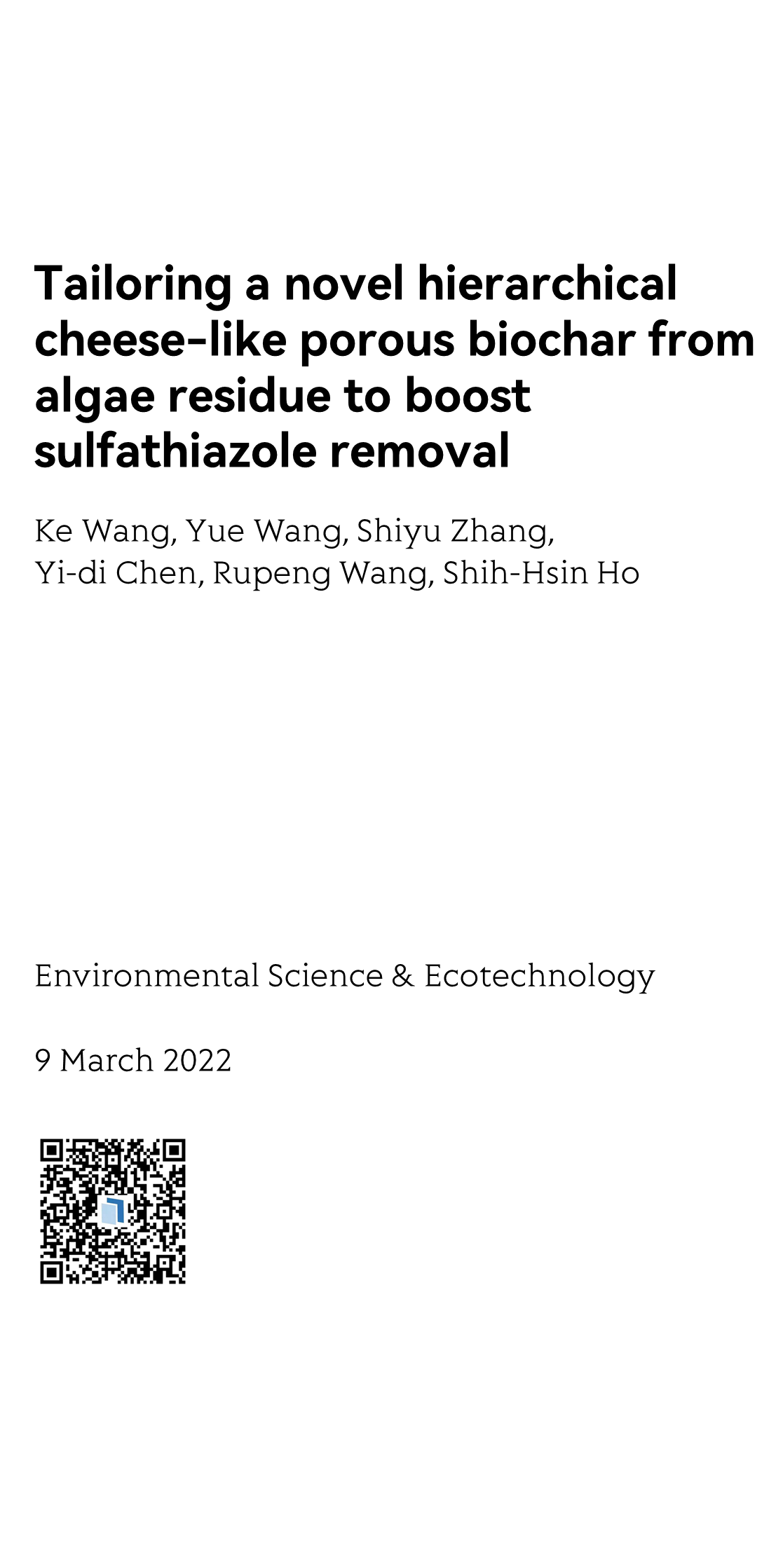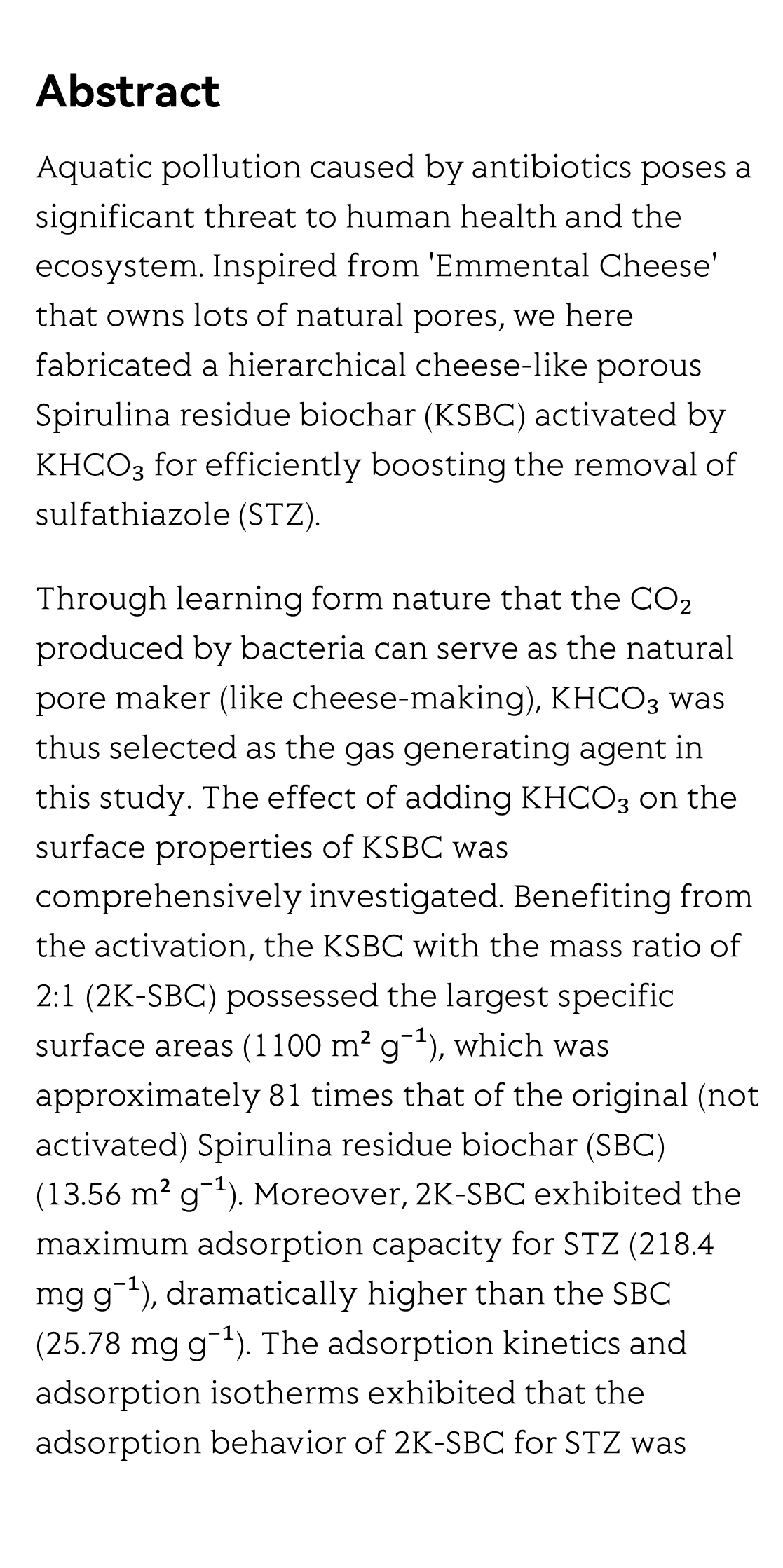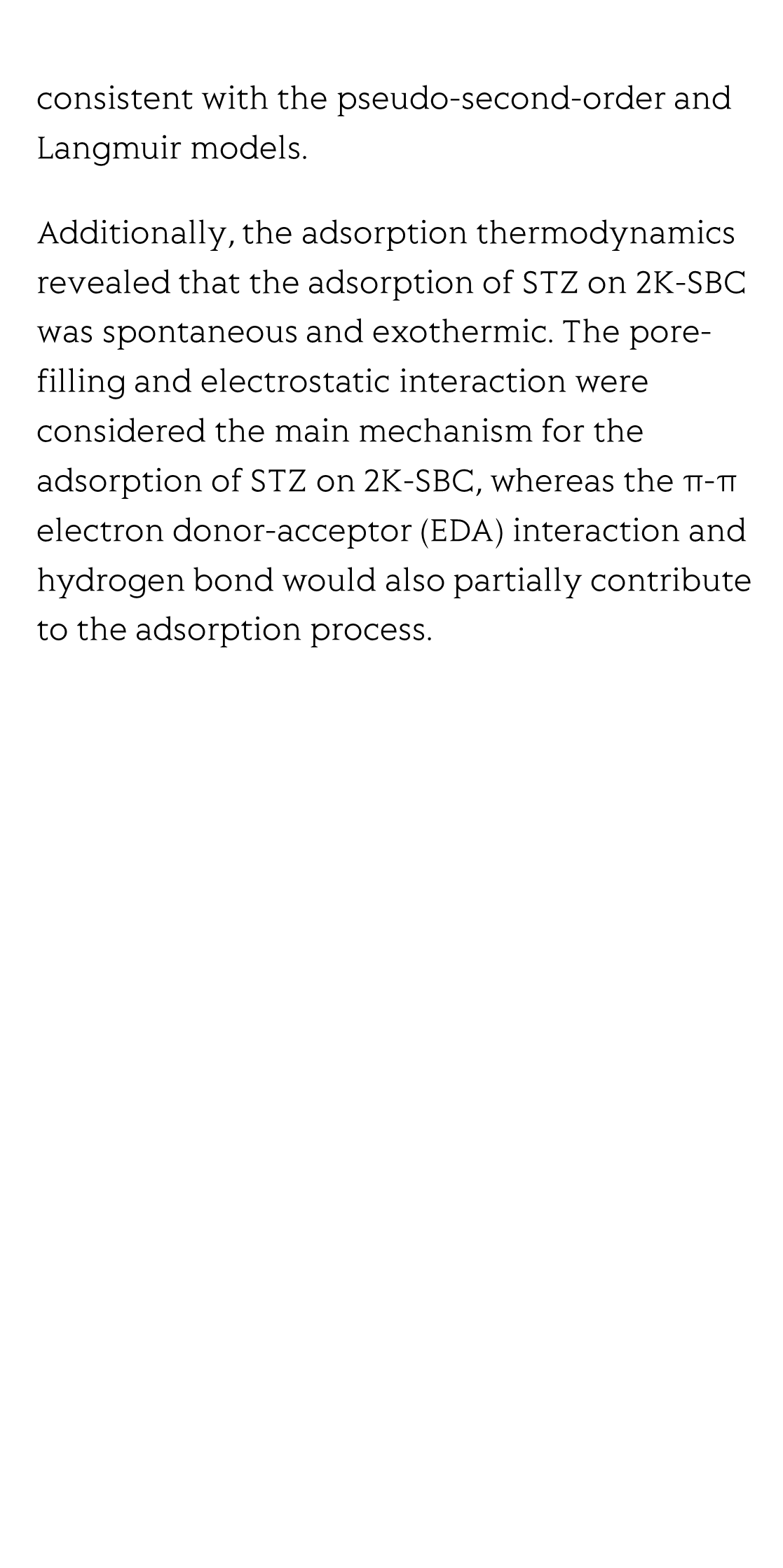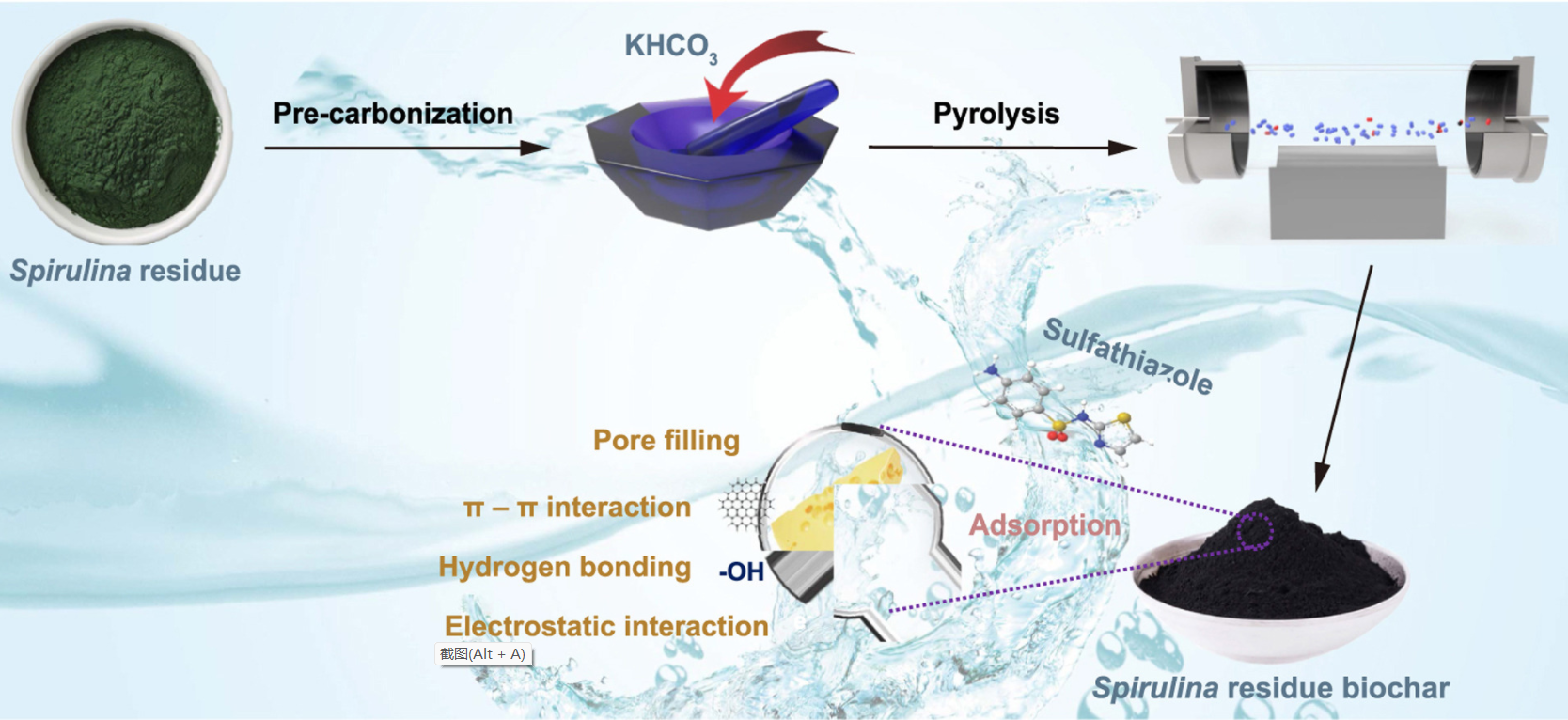(Peer-Reviewed) Tailoring a novel hierarchical cheese-like porous biochar from algae residue to boost sulfathiazole removal
Ke Wang 王科 ¹, Yue Wang ¹, Shiyu Zhang ¹, Yi-di Chen 陈以頔 ¹ ², Rupeng Wang 王汝鹏 ¹, Shih-Hsin Ho 贺诗欣 ¹
¹ State Key Laboratory of Urban Water Resource and Environment, School of Environment, Harbin Institute of Technology, Harbin, 150040, PR China
中国 哈尔滨 哈尔滨工业大学环境学院 城市水资源与水环境国家重点实验室
² State Key Laboratory of Urban Water Resource and Environment, School of Civil and Environmental Engineering, Harbin Institute of Technology (Shenzhen), Shenzhen, 518055, PR China
中国 深圳 哈尔滨工业大学(深圳)土木与环境工程学院 城市水资源与水环境国家重点实验室
Abstract
Aquatic pollution caused by antibiotics poses a significant threat to human health and the ecosystem. Inspired from 'Emmental Cheese' that owns lots of natural pores, we here fabricated a hierarchical cheese-like porous Spirulina residue biochar (KSBC) activated by KHCO₃ for efficiently boosting the removal of sulfathiazole (STZ).
Through learning form nature that the CO₂ produced by bacteria can serve as the natural pore maker (like cheese-making), KHCO₃ was thus selected as the gas generating agent in this study. The effect of adding KHCO₃ on the surface properties of KSBC was comprehensively investigated. Benefiting from the activation, the KSBC with the mass ratio of 2:1 (2K-SBC) possessed the largest specific surface areas (1100 m² g⁻¹), which was approximately 81 times that of the original (not activated) Spirulina residue biochar (SBC) (13.56 m² g⁻¹). Moreover, 2K-SBC exhibited the maximum adsorption capacity for STZ (218.4 mg g⁻¹), dramatically higher than the SBC (25.78 mg g⁻¹). The adsorption kinetics and adsorption isotherms exhibited that the adsorption behavior of 2K-SBC for STZ was consistent with the pseudo-second-order and Langmuir models.
Additionally, the adsorption thermodynamics revealed that the adsorption of STZ on 2K-SBC was spontaneous and exothermic. The pore-filling and electrostatic interaction were considered the main mechanism for the adsorption of STZ on 2K-SBC, whereas the π-π electron donor-acceptor (EDA) interaction and hydrogen bond would also partially contribute to the adsorption process.
Flicker minimization in power-saving displays enabled by measurement of difference in flexoelectric coefficients and displacement-current in positive dielectric anisotropy liquid crystals
Junho Jung, HaYoung Jung, GyuRi Choi, HanByeol Park, Sun-Mi Park, Ki-Sun Kwon, Heui-Seok Jin, Dong-Jin Lee, Hoon Jeong, JeongKi Park, Byeong Koo Kim, Seung Hee Lee, MinSu Kim
Opto-Electronic Advances
2025-09-25
Dual-frequency angular-multiplexed fringe projection profilometry with deep learning: breaking hardware limits for ultra-high-speed 3D imaging
Wenwu Chen, Yifan Liu, Shijie Feng, Wei Yin, Jiaming Qian, Yixuan Li, Hang Zhang, Maciej Trusiak, Malgorzata Kujawinska, Qian Chen, Chao Zuo
Opto-Electronic Advances
2025-09-25







